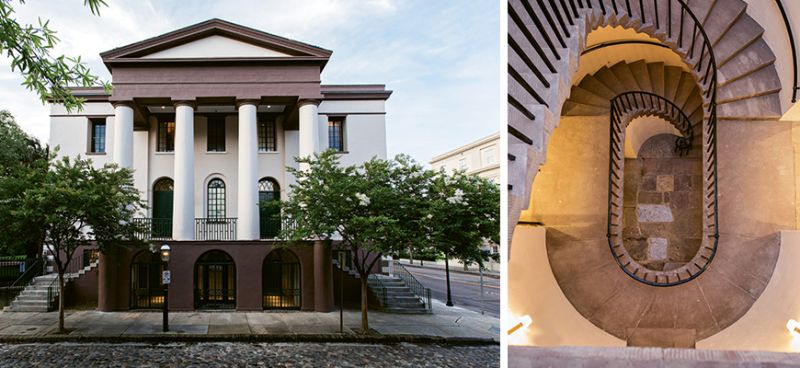This month, the South Carolina Historical Society welcomes visitors to a brand-new museum

A $6.8-million renovation transformed the Fireproof Building at 100 Meeting Street into the South Carolina Historical Society Museum.
The South Carolina Historical Society quietly housed the history of the state inside Meeting Street’s Fireproof Building for more than 70 years. Designed by Washington Monument architect Robert Mills and constructed in 1826 to house government records, the structure is considered the first in the nation created to withstand a blaze. As such, it protected the society’s huge archive—including two million pieces of paper (from letters to legal documents), plus maps, photos, books, and more—for decades before the collection was moved to the College of Charleston in 2014.
What the Fireproof Building didn’t do so well was encourage the public to see those incredible records. Using a speakeasy-like system, visitors had to ring a bell, and guest numbers were limited.
That’s all about to change, with help from architect Glenn Keyes and contractor Richard Marks. On September 22, the South Carolina Historical Society Museum opens, using artifacts and digital displays to trace the state’s history from 1670 to present day. “We’re providing a firsthand glimpse into the lives of South Carolinians throughout history, as told from their own handwritten journals, letters, original maps, photographs, and more,” explains Faye Jensen, PhD, the society’s executive director.

The South Carolina Historical Society Museum houses artifacts including Reverend Archibald Stobo’s circa-1658 Bible (left) and Mark Catesby’s hand-colored etching The Rice-Bird (right).
In the first of six galleries, “Exploration and Settlement,” interactive kiosks explore the lives of four individuals: The Cassique of Kiawah, Huguenot settler Rene Ravenel, indigo innovator Eliza Lucas Pinckney, and enslaved person Priscilla Ball. Later, in “Division and Strife: Secession, Civil War, and Reconstruction,” visitors meet more historical figures—including a great-grandson of Priscilla named Henry Robards—getting a very personal glimpse into the past.
Additional displays draw in artifacts from the society’s collections—from an 1851 edition of The Carolina Housewife to Francis Marion’s powder horn. The hope is to encourage folks to not only experience a taste of South Carolina history, but to delve into the society’s catalogs, genealogy charts, and digitized records to discover even more on their own.
Fabulous First: The museum’s grand opening is September 22, beginning with a ribbon cutting at 11 a.m. Admission on this day is free (registration required); regular admission is $15; $7 for ages five-12. Visit schistory.org.
Images by (building-2) Andrew Cebulka & courtesy of (artifacts-2) The South Carolina Historical Society